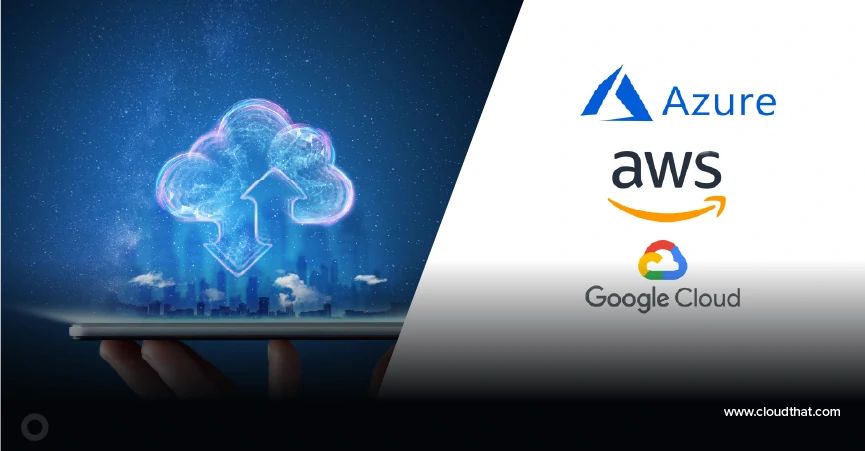|
Voiced by Amazon Polly |
In the era of cloud computing, businesses are increasingly moving their operations to the cloud. A key part of this transition is managing user identities seamlessly across on-premises and cloud environments. This blog explores how to synchronize users from on-premises to Azure, AWS, and GCP, ensuring smooth identity management and security.
Become an Azure Expert in Just 2 Months with Industry-Certified Trainers
- Career-Boosting Skills
- Hands-on Labs
- Flexible Learning
1. Introduction to User Synchronization
User synchronization refers to the process of replicating user identities from on-premises directories (like Active Directory) to cloud environments. This helps maintain a unified identity, enabling single sign-on (SSO) and centralized access control.
2. Syncing Users to Microsoft Azure
Azure Active Directory (Azure AD) Connect
Azure AD Connect is the primary tool for syncing on-premises Active Directory with Azure AD.
Key Steps:
- Install Azure AD Connect on a Windows Server.
- Choose the right sync option: Password hash sync, pass-through authentication, or federation.
- Configure synchronization rules to filter which users and groups are synced.
Best Practices:
- Regularly update Azure AD Connect.
- Monitor sync health via Azure AD Connect Health.

3. Syncing Users to Amazon Web Services (AWS)
AWS Directory Service
AWS offers multiple options for integrating with on-premises directories.
Approaches:
- AWS Directory Service for Microsoft Active Directory: Allows seamless integration with on-prem AD.
- Simple AD: A standalone directory for basic needs.
Steps:
- Set up AWS Directory Service.
- Enable Active Directory Trusts if needed.
- Use AWS Single Sign-On (SSO) for centralized user management.
Considerations:
- Understand the cost implications of using AWS Directory Service.
- Ensure network connectivity (VPN or Direct Connect) for hybrid setups.
4. Syncing Users to Google Cloud Platform (GCP)
Google Workspace and Cloud Identity
GCP integrates with Google Workspace (formerly G Suite) for identity management.
Key Steps:
- Set up Cloud Identity or Google Workspace.
- Use the Google Cloud Directory Sync (GCDS) tool to sync with on-prem LDAP directories.
- Configure SSO for seamless access to GCP resources.
Advanced Options:
- Use Identity Federation to connect with external identity providers.
- Implement Access Context Manager for fine-grained access control.
5. Common Challenges and Solutions
- Latency Issues: Optimize sync schedules and network performance.
- Security Concerns: Use multi-factor authentication (MFA) and encryption.
- Complex Directory Structures: Plan your synchronization strategy to handle nested groups and attributes.
Here are some common use cases of Azure Hybrid Identity:
- Seamless Single Sign-On (SSO) Across On-Premises and Cloud
- Use Case: Employees access both on-premises applications (e.g., SAP, legacy intranet) and cloud services (e.g., Microsoft 365, Salesforce) with a single set of credentials.
- Solution: Azure AD with Seamless SSO or Pass-through Authentication.
- Coexistence of On-Premises and Cloud Directories
- Use Case: Organizations want to maintain Active Directory on-premises while gradually moving users to the cloud.
- Solution: Azure AD Connect to sync identities between AD and Azure AD.
- Secure Remote Access to On-Prem Resources
- Use Case: Remote workers need access to file shares, internal web apps, or legacy tools without using VPN.
- Solution: Azure AD Application Proxy or Azure AD Join with Conditional Access.
- Cloud-Based Multi-Factor Authentication (MFA) for On-Prem Services
- Use Case: Enhance security of on-premises apps with Azure AD MFA.
- Solution: Integrate Azure AD MFA with AD FS or use Azure AD Application Proxy.
- Password Writeback for Self-Service Password Reset
- Use Case: Users reset their passwords in the cloud, and the changes reflect in the on-prem AD.
- Solution: Enable Password Writeback in Azure AD Connect.
- Conditional Access and Identity Protection
- Use Case: Enforce access controls based on device, location, or risk even for on-prem users.
- Solution: Azure AD Conditional Access and Identity Protection policies.
Conclusion
Synchronizing users from on-premises to cloud platforms is crucial for streamlined operations and robust security. Whether you’re using Azure, AWS, or GCP, understanding the specific tools and configurations can make the transition smooth and efficient.
Transform Your Career with AWS Certifications
- Advanced Skills
- AWS Official Curriculum
- 10+ Hand-on Labs
About CloudThat
CloudThat is an award-winning company and the first in India to offer cloud training and consulting services worldwide. As a Microsoft Solutions Partner, AWS Advanced Tier Training Partner, and Google Cloud Platform Partner, CloudThat has empowered over 850,000 professionals through 600+ cloud certifications winning global recognition for its training excellence including 20 MCT Trainers in Microsoft’s Global Top 100 and an impressive 12 awards in the last 8 years. CloudThat specializes in Cloud Migration, Data Platforms, DevOps, IoT, and cutting-edge technologies like Gen AI & AI/ML. It has delivered over 500 consulting projects for 250+ organizations in 30+ countries as it continues to empower professionals and enterprises to thrive in the digital-first world.

WRITTEN BY Kavya B.S
Kavya B.S is a Subject Matter Expert and MCT at CloudThat, specializing in Microsoft Azure. With 15 years of experience in training and academics, she has trained over 5,000 professionals to upskill in Architect, Administrator and Security. Known for simplifying complex concepts through real-world analogies, she brings deep technical knowledge and practical application into every learning experience. Kavya’s passion for teaching reflects in her unique approach to learning and development.


 Login
Login


 May 21, 2025
May 21, 2025 PREV
PREV











Comments